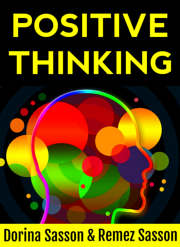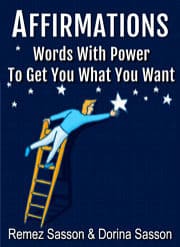
Creative therapy uses art-based activities, such as music and dance, to help treat emotional and mental health conditions.
Creative therapy is a form of therapy that encourages a person to work through their issues using art-based exercises. Keep reading to learn more about creative therapy, including the types, how they work, and some conditions they may help with.
What Is Creative Therapy?
Creative therapy uses art forms – such as dance, drawing, or music – to help treat certain conditions. Trained therapists can administer creative therapy to help people experiencing a range of mental, emotional, and physical issues.
Browse our online courses on meditation, positive thinking, overcoming procrastination, confidence, and freedom from distractions.
Creative therapy does not require a person to have any sort of artistic ability.
Part of creative therapy is helping a person channel their thoughts and emotions through artistic expression. For these reasons, creative therapy may be beneficial for people who have difficulty expressing their feelings verbally.
Once a person has created a piece of art, for example, they can discuss their choices with the therapist. Talking with a therapist about their creation can help the person process how they are feeling.
How Can Creative Exercises Be Beneficial?
There are many conditions that can benefit from the use of creative therapy. According to the American Art Therapy Association, people can use creative therapy to:
- Improve cognitive and sensorimotor functions
- Improve self-esteem and self-awareness
- Enhance social skills
- Build emotional strength
- Encourage insight into situations that are causing issues
- Resolve conflict or distress
It is suggested that the creative therapy could be useful for:
- Helping a person build relationships
- Helping a person have a better understanding of themselves
- Providing a distraction from pain or illness
- Giving a person a sense of personal achievement
- Providing relaxation or empowerment
Creative therapy may help treat:
- Mental health conditions
- Alzheimer’s disease
- Trauma
- Stress
- Chronic illnesses, such as cancer
- Head injuries
- Substance misuse issues
- Physical or developmental disabilities
- Dementia
Creative therapy is all about how it can help people experiencing stress. It is shown that taking part in creative therapy significantly reduced a person’s stress levels.
Creative Therapy has various positive impacts on people with dementia, cancer, heart failure, HIV or AIDS, or end stage renal disease.
Types of Creative Therapy
There are various types of creative therapy that a person may benefit from. Certain creative therapies may be more useful for specific conditions.
A person may want to speak with a therapist or another healthcare professional to determine which type of creative therapy could work best for them.
Alternatively, a person may find that they are drawn to a particular form of creative therapy. The person may even discover that they benefit from drawing or sculpting at home.
However, practicing creative therapy at home will not have the added benefit of speaking with a therapist about one’s creations.
The sections below will look at the various types of creative therapy in more detail.
Music Therapy
In music therapy, a trained music therapist uses musical responses to assess a person’s physical and emotional well-being.
A music therapy session may involve:
- Musical improvisation
- Listening to music
- Song-writing
- Discussing lyrics
- Music performance
- Discussing music and imagery
- Learning through music
Music can help a person relax and process emotions. Music therapy can be useful for people of all ages. Specifically, this form of creative therapy may benefit people who have:
- Mental health conditions
- Learning, developmental, or physical disabilities
- Alzheimer’s disease
- Substance misuse issues
- Brain injuries
- Acute or chronic pain, including labour-related pain
People with mild-to-moderate Alzheimer’s disease had improved memory, orientation, depression, and anxiety levels following music therapy sessions.
Another study does indicate that listening to music, especially classical combined with jazz, has a positive effect on people with depression.
Dance Therapy
- Dance therapy involves the use of movement to enhance a person’s emotional, social, cognitive, and physical well-being. Dance therapists aim to help a person:
- Improve their self-esteem and body image
- Develop communication skills
- Build relationships
- Create options for dealing with problems
- Discover the reasons for certain patterns of behaviour
- Expand their movement levels
Dance therapy can be useful for people who have social, developmental, medical, physical, or psychological issues.
The use of dance therapy may be beneficial for adults with depression. Further research indicates that dance therapy can decrease anxiety and depression levels while increasing cognitive skills and quality of life.
Poetry Therapy
In poetry therapy, a therapist uses the reading or writing of poetry to help a person understand their feelings and those of others. Poetry therapy may be useful when treating cancer. It suggests that participants could use poetry to express their thoughts and emotions, and that poetry may help them feel like part of a community.
Art Therapy
Art therapy uses various art forms such as painting, drawing, or sculpting to help a person:
- Develop social skills
- Reduce their anxiety
- Enhance their reality orientation
- Increase their self-esteem
- Explore their feelings
- Reconcile emotional conflicts
- Manage their behaviour
- Promote self-awareness
An art therapist can look at a piece that a person has created and help them discuss the feelings involved in its creation. The act of creating art can also help soothe and relax a person.
The effects of creative therapy on adults over 60 years of age who were at risk of dementia. They found that sessions involving drawing and storytelling led to improved cognitive function in these adults up to 6 months later.
Drama Therapy
The aim of drama therapy is to provide a person with a platform to share their thoughts and feelings. Drama therapy can help a person share their inner experiences through:
- Improvisations
- Theatre games
- Storytelling
- Enactment
Drama therapy can be useful for people of all ages, and it may be particularly beneficial to those who:
- Have been to prison
- Have been without a home
- Have HIV or AIDS
- Are older adults
- Are receiving treatment for behavioral health issues
- Are recovering from addiction
- Have a “dysfunctional” family
- Have developmental disabilities
- Have experienced trauma
- Have mental health conditions
Drama therapy may have a positive effect on the self-perception and self-expression of students with mental health or behavioural conditions.
Risks and Flaws in Creative Therapies
It is indicated that some people experience anxiety, an increase in pain, and unresolved emotions with creative therapy.
However, these effects only occurred in two studies, so further research is necessary to confirm these findings.
It is important that qualified creative therapists administer creative therapy to ensure that a person receives the treatment they need. However, art therapists also note that other professionals may not take them seriously, which could lead to people missing out on creative therapy referrals.
Furthermore, these therapies rely on the person being able to engage with the creative activity. Some people may not feel comfortable with this, in which case creative therapy may not be ideal for them.
Summary
Creative therapy is a form of therapy that involves a person receiving treatment through art-based activities. Creative therapy can have many benefits and seems to be useful for people with various physical, mental, and emotional conditions.
There are many forms of creative therapy, each providing treatment in different ways. A person can speak with a healthcare professional about which type of creative therapy may suit them best.
About the Author
Trishna Patnaik is a BSc (in life sciences) and MBA (in marketing) by qualification but an artist by choice. Previously a corporate professional, she realized that she wanted to do something more meaningful. She found her true calling in her passion, painting. Trishna is now a full-time professional painter based in Mumbai, as well as an art therapist and healer.


